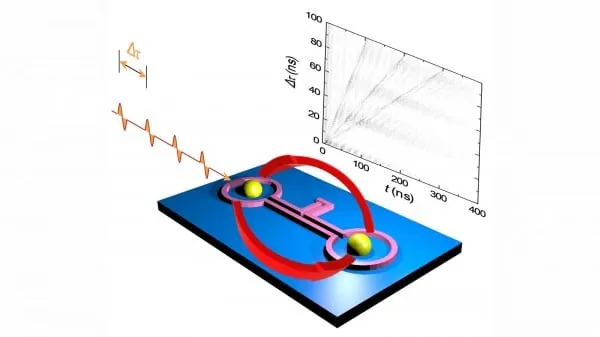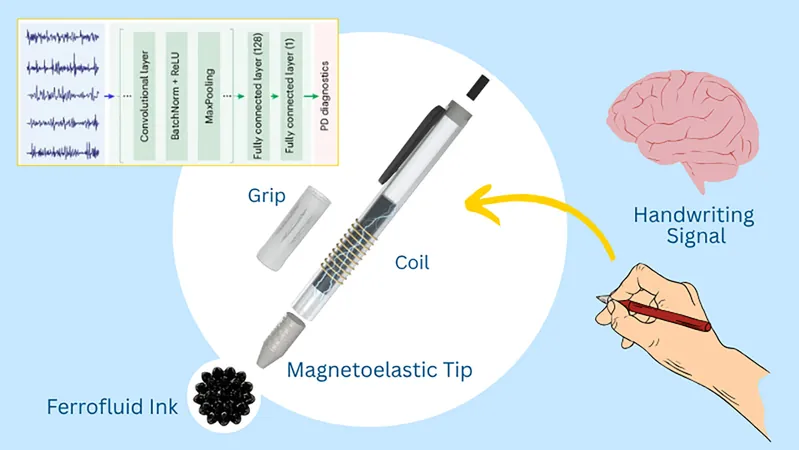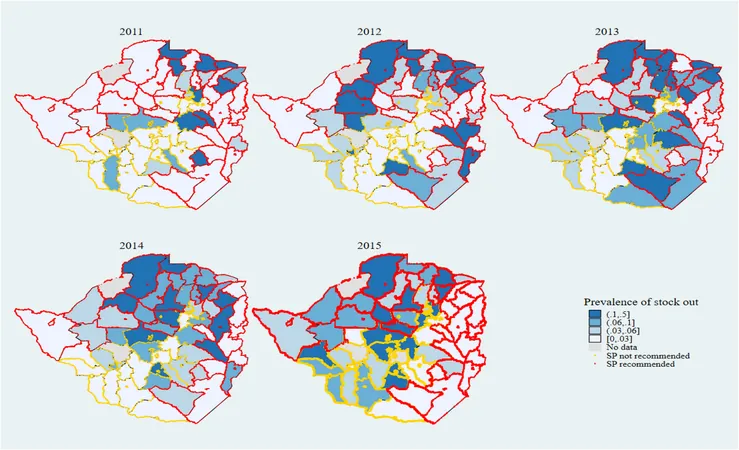
Revolutionizing Quantum Computing: Magnons Take Center Stage
2025-06-11
Author: Arjun
A Quantum Leap in Technology
Researchers have unlocked a groundbreaking method to utilize magnons—the collective vibrations of atomic magnetic spins—for the next generation of information technologies, especially in quantum computing.
The Magnetic Marvels of Modern Technology
From the hard drives that secure our data to the engines powering our world, magnetism is the backbone of many transformative technologies. As we look ahead, magnetic materials are set to play an even more pivotal role in quantum information processing and the evolution of quantum computers.
A New Era at Argonne National Laboratory
In an exciting breakthrough, a team from the U.S. Department of Energy’s Argonne National Laboratory has developed a method to manipulate the magnetic properties of atoms in real-time, which could significantly enhance the capabilities of future quantum computers. This innovative approach paves the way for ‘on-chip’ technologies where magnetic systems are embedded in semiconductor chips.
Harnessing the Power of Magnons
At the heart of this research is the concept that each atom possesses its own magnetic spin, akin to tiny compass needles. When these spins harmoniously align, they produce a wave known as a magnon, which the team successfully managed to control in real-time to tap into its information-processing potential.
Revolutionizing Quantum Operations
Yi Li, a leading scientist at Argonne, noted, “This work demonstrates how magnetic excitations can be transferred remotely and engage in real-time interference, potentially revolutionizing quantum computing.” This method builds a prototype model for further exploration of magnetic systems in tech.
The Experiment: A Dance of Energy
Using two small spheres made of yttrium iron garnet, the researchers created a setup where they could send energy pulses that synchronized perfectly between the spheres. This phenomenon allowed for coherent energy transfer, mimicking an uninterrupted conversation over a distance.
Interference Patterns: A Quantum Signature
When two energy pulses were sent simultaneously, they either reinforced or canceled each other based on timing, showcasing how magnons can interfere—like waves creating intricate patterns. This discovery hints at the potential for complex signal processing in future technologies.
The Future of Quantum Computing
The findings suggest that such magnetic excitations can achieve “nearly perfect interference”—an essential criterion for exploiting magnons in advanced applications. The implications for quantum computers are profound, as magnetic materials could facilitate on-chip isolators to reduce quantum noise and enhance clarity.
Colossal Challenges and Opportunities Ahead
Valentine Novosad, a senior materials scientist at Argonne, emphasized the significant physics at play here. “This work is about beautiful physics on a chip, involving superconducting circuits and low-damping magnetic materials—a vital piece of research.”
Building on Past Innovations
This research follows previous studies on coupling magnetization with superconductivity, furthering our understanding of how magnons can store information and perform sophisticated processing tasks.
An Exciting Future Awaits
Published in the April 2025 issue of Nature Communications, this study represents a substantial leap toward a quantum computing future powered by the manipulation of magnons. As researchers continue to explore these magnetic marvels, the possibilities for quantum technology appear boundless.





 Brasil (PT)
Brasil (PT)
 Canada (EN)
Canada (EN)
 Chile (ES)
Chile (ES)
 Česko (CS)
Česko (CS)
 대한민국 (KO)
대한민국 (KO)
 España (ES)
España (ES)
 France (FR)
France (FR)
 Hong Kong (EN)
Hong Kong (EN)
 Italia (IT)
Italia (IT)
 日本 (JA)
日本 (JA)
 Magyarország (HU)
Magyarország (HU)
 Norge (NO)
Norge (NO)
 Polska (PL)
Polska (PL)
 Schweiz (DE)
Schweiz (DE)
 Singapore (EN)
Singapore (EN)
 Sverige (SV)
Sverige (SV)
 Suomi (FI)
Suomi (FI)
 Türkiye (TR)
Türkiye (TR)
 الإمارات العربية المتحدة (AR)
الإمارات العربية المتحدة (AR)